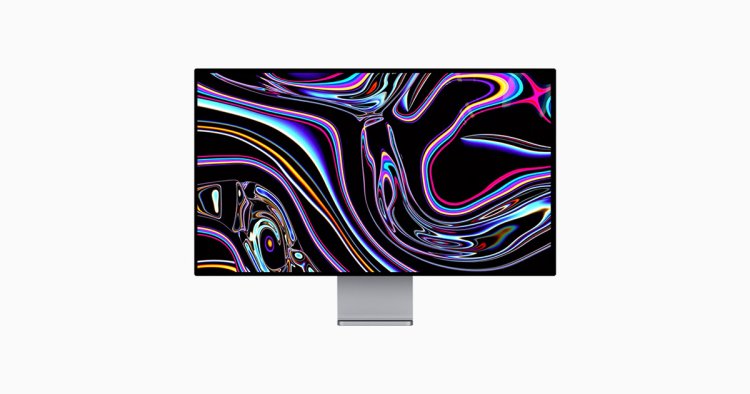In-Depth Analysis of Apple MacBook Pro's Liquid Retina XDR Display
Apple's MacBook Pro 16, powered by the M1 Pro SoC, boasts a significant component that merits attention – its Liquid Retina XDR display. This mini-LED 120Hz display is a notable advancement in laptop screen technology, and this review aims to provide an in-depth analysis of its performance and capabilities.

Design and Technical Specifications
Display Overview
The MacBook Pro's display, dubbed the "Liquid Retina XDR" by Apple, is more than just marketing jargon. It's a high-resolution, full array local dimming mini-LED LCD, offering true HDR functionality. The 16.2-inch panel has a unique resolution of 3456 x 2234, maintaining Apple's trend of using non-standard resolutions.
Mini-LED Backlight Technology
Featuring 10,000 mini-LEDs, the display offers an impressive zone density, contributing to a contrast ratio of 1,000,000:1 and peak brightness of up to 1,600 nits in HDR mode. The panel appears to be IPS-like, though the exact technology is not specified by Apple.
Refresh Rate and Adaptive Sync
Introduction of ProMotion
The MacBook Pro’s display supports up to a 120Hz refresh rate with adaptive sync, rebranded by Apple as "ProMotion." This combination of high refresh rate and adaptive sync is a first for Apple, though such technology has been present in other laptops and displays for years.
Motion Performance Considerations
Despite the high refresh rate, the panel's response time is somewhat slow, which may impact the smoothness in fast-paced scenarios. This is a key area where the display's performance diverges from its impressive technical specifications.
Color Performance and Calibration
Wide Color Gamut
The MacBook Pro's display covers 99% of the DCI-P3 color space, making it an excellent choice for content creators working in various color gamuts. It also means perfect sRGB coverage for designing web content or creating SDR videos.
Factory Calibration and Profiles
Apple's color management in macOS outperforms Windows, with various color profiles effectively working across many applications. The default Apple Display profile shows commendable performance, especially in sRGB content display.
Limitations in Adobe RGB Coverage
Despite its strengths, the display falls short in Adobe RGB coverage, which is crucial for photography work. It covers over 90% of Adobe RGB but misses the top range of greens, limiting its suitability for certain professional uses.
Also Check Geforce RTX 4000 without architectural changes
HDR Performance and Brightness
HDR Capabilities
In HDR mode, the display’s brightness is exceptionally high, maintaining consistent levels without significant dimming even in prolonged bright scenes. This performance comes at the cost of increased power consumption, a consideration for battery usage.
Brightness and Contrast in SDR Mode
For SDR content, the display achieves a peak brightness of around 520 nits with a variable black level. The contrast ratio and color accuracy are well-suited for everyday workloads, mainstream creative tools, and gaming.
The Notch Design: A Controversial Choice
Impact on Display Aesthetics
The inclusion of a notch in the MacBook Pro’s display has been a significant talking point. While Apple claims it was necessary to maximize display area while keeping the webcam at the top, the notch's size relative to the camera components has drawn criticism for its obtrusiveness.
Comparison with Competing Displays
Positioning Against OLED Panels
Apple’s Liquid Retina XDR display is in direct competition with the latest 4K OLED panels in high-end Windows laptops. While offering distinct advantages in certain areas like peak brightness and color accuracy, it faces stiff competition from these OLED counterparts, particularly in response times and motion performance.
User Experience and Practical Implications
Suitability for Different User Groups
The display is especially beneficial for users engaged in color-sensitive work, offering accurate and consistent color reproduction. However, its slow response times may detract from the experience for users focused on fast-paced gaming or action-oriented media.
The Balance of Innovation and Usability
While Apple pushes the envelope with the Liquid Retina XDR display, balancing cutting-edge technology with practical usability remains a challenge. Users must weigh the display's exceptional color performance and HDR capabilities against its limitations in motion handling and Adobe RGB coverage.
Conclusion: Assessing the Liquid Retina XDR Display
A Milestone in Laptop Display Technology
Apple's Liquid Retina XDR display on the MacBook Pro represents a significant advancement in laptop screen technology. It combines high resolution, impressive color performance, and exceptional brightness levels, setting a new standard in the industry.
Navigating the Trade-offs
While the display offers numerous benefits, users should be aware of its limitations, particularly in motion performance and Adobe RGB coverage. The balance of innovative features with these drawbacks will be key in determining the display's suitability for individual needs and preferences.





































